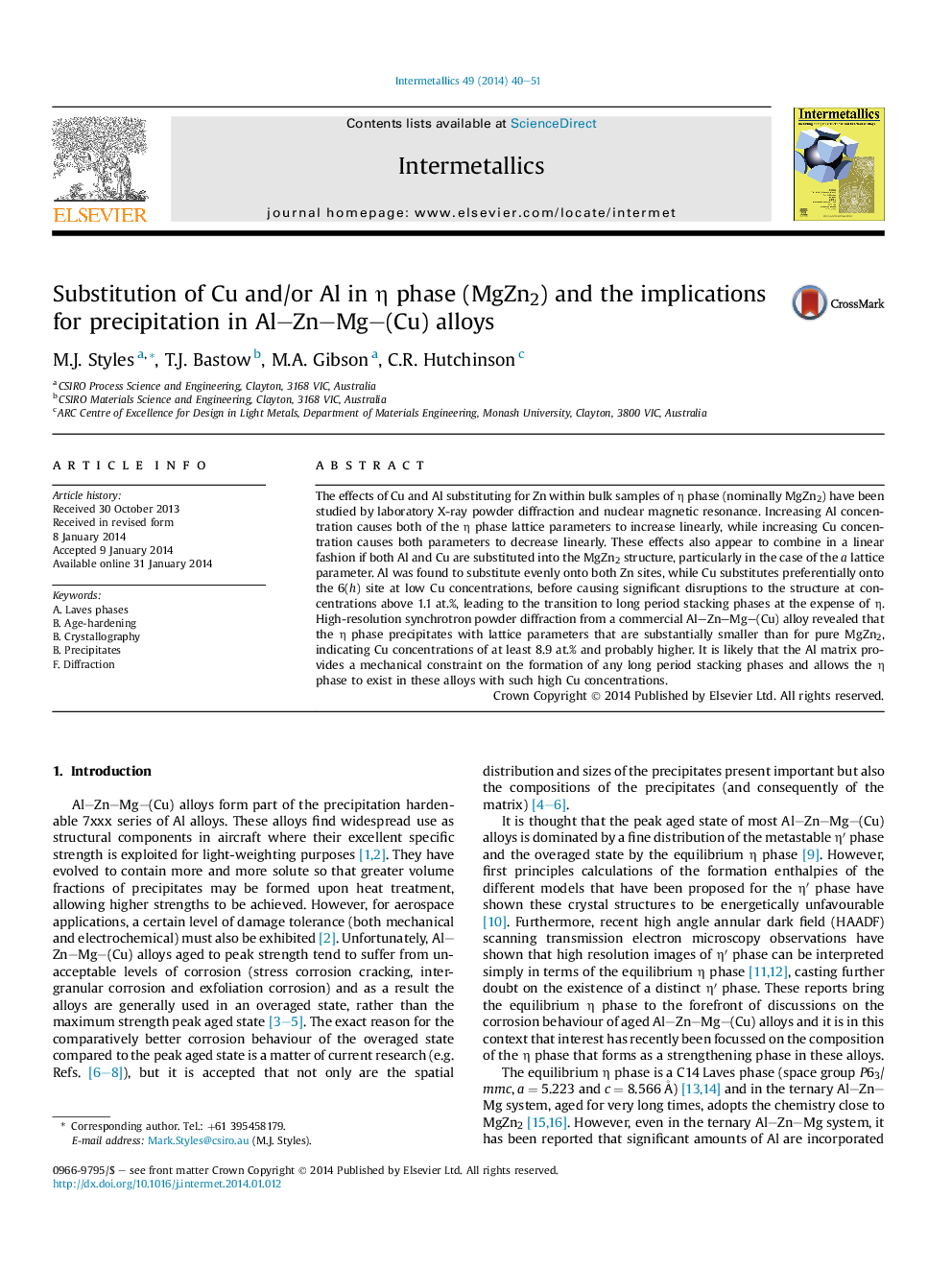| Article ID | Journal | Published Year | Pages | File Type |
|---|---|---|---|---|
| 1600085 | Intermetallics | 2014 | 12 Pages |
Abstract
The effects of Cu and Al substituting for Zn within bulk samples of η phase (nominally MgZn2) have been studied by laboratory X-ray powder diffraction and nuclear magnetic resonance. Increasing Al concentration causes both of the η phase lattice parameters to increase linearly, while increasing Cu concentration causes both parameters to decrease linearly. These effects also appear to combine in a linear fashion if both Al and Cu are substituted into the MgZn2 structure, particularly in the case of the a lattice parameter. Al was found to substitute evenly onto both Zn sites, while Cu substitutes preferentially onto the 6(h) site at low Cu concentrations, before causing significant disruptions to the structure at concentrations above 1.1 at.%, leading to the transition to long period stacking phases at the expense of η. High-resolution synchrotron powder diffraction from a commercial Al-Zn-Mg-(Cu) alloy revealed that the η phase precipitates with lattice parameters that are substantially smaller than for pure MgZn2, indicating Cu concentrations of at least 8.9 at.% and probably higher. It is likely that the Al matrix provides a mechanical constraint on the formation of any long period stacking phases and allows the η phase to exist in these alloys with such high Cu concentrations.
Related Topics
Physical Sciences and Engineering
Materials Science
Metals and Alloys
Authors
M.J. Styles, T.J. Bastow, M.A. Gibson, C.R. Hutchinson,
